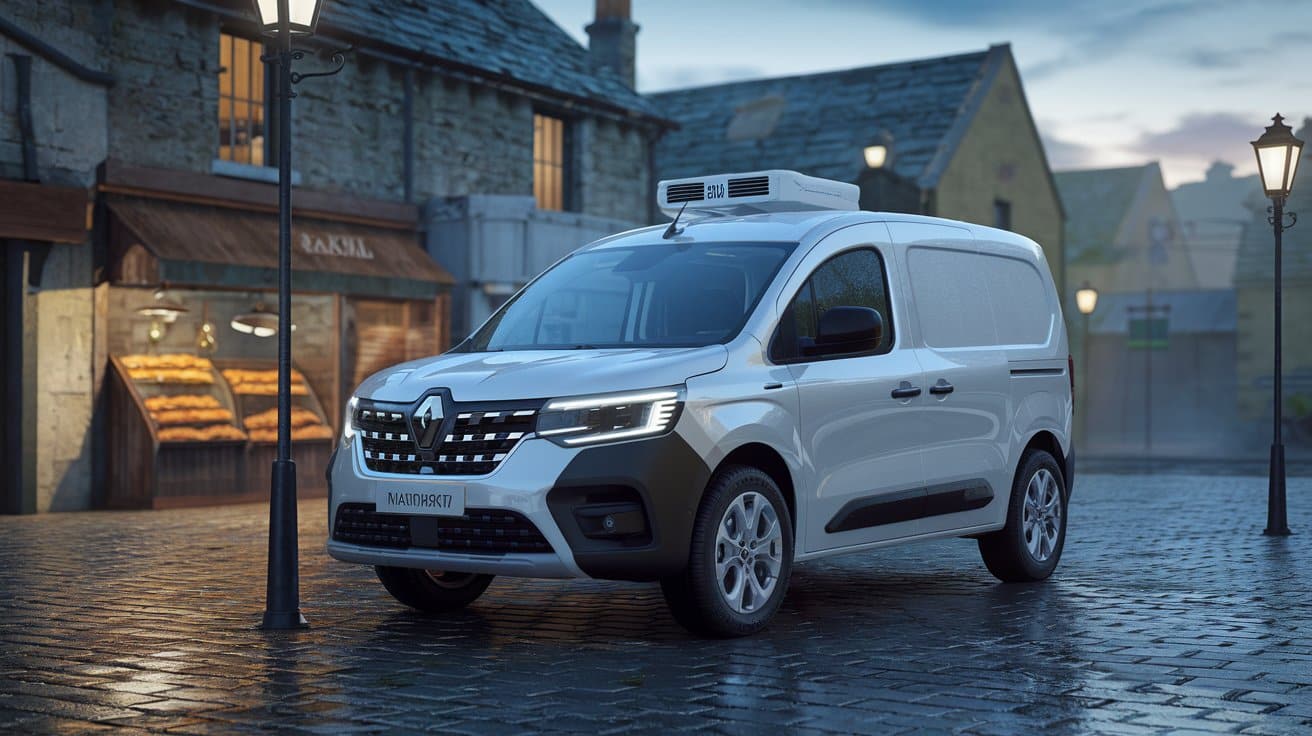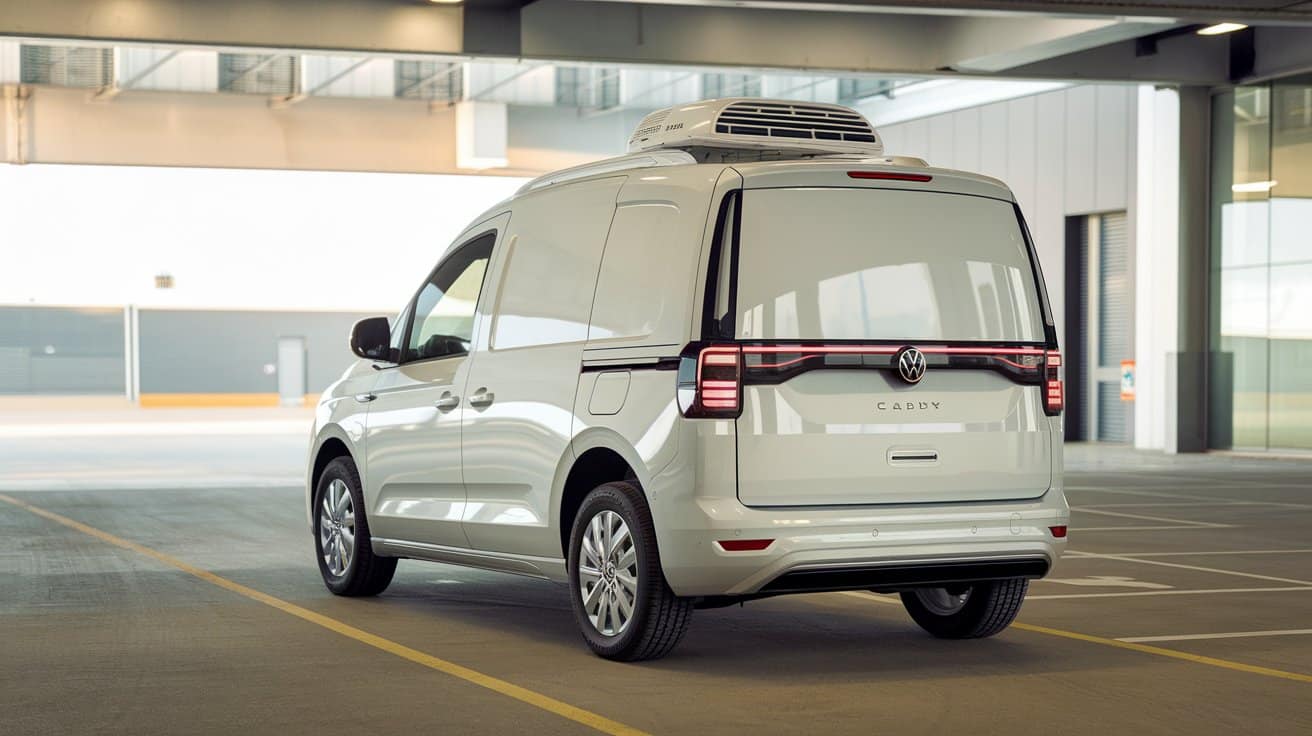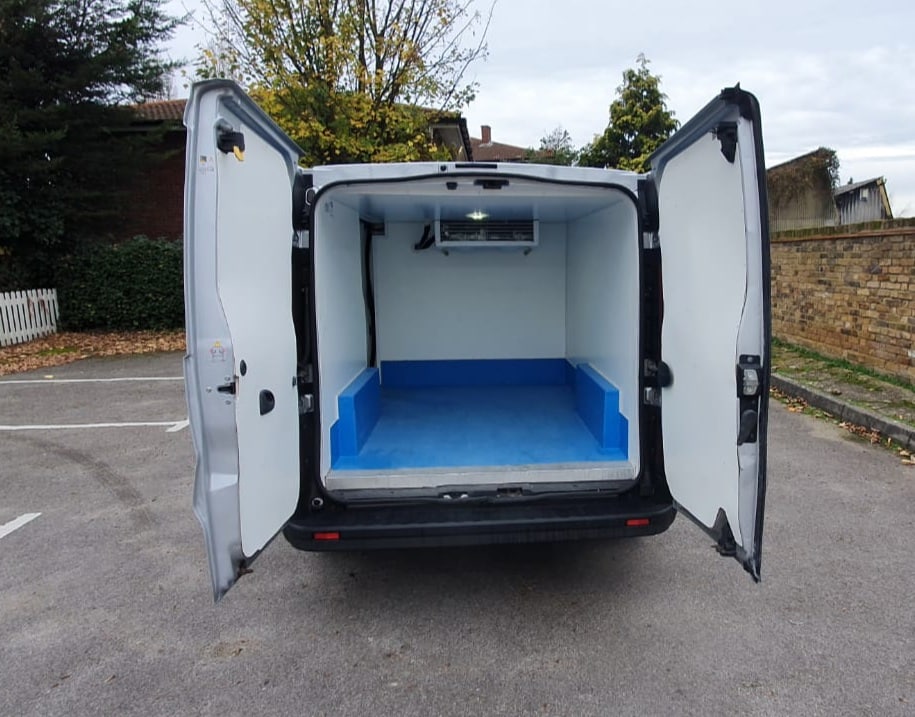
Used vs New Refrigerated Vans – What Should You Really Choose?
Choosing between a used or new refrigerated van isn’t just a practical decision; it’s a move that influences every audit, contract, and delivery your organisation faces. For cold chain businesses—from food wholesalers and florists to pharma couriers and event caterers—your van is more than transport; it’s your compliance passport, client trust builder, and first line of defence against downtime and spoilage.
The market is crowded with options and promises. Your real leverage comes from choosing a van that aligns with compliance (think HACCP, GDP, ULEZ), minimises operational surprises, and flexes with shifting contracts or seasonality. Ignore these, and a short-term bargain can cost dearly in fines, lost clients, or product loss.
Ask yourself:
- What demands will your next contract or compliance inspection add to your fleet?
- Is now the time to prioritise customization, faster access, or cost efficiency?
- Are you protected if a fridge failure or documentation request arrives at the wrong moment?
Whether you manage a growing fleet, a start-up launch, or European route expansion, your decision should be guided by more than price—anchored by proof, warranty, and audit-ready support. Glacier Vehicles designs every handover with sector clarity, compliance guarantees, and documentation built to withstand the strictest scrutiny.
Every fleet decision echoes through your contracts, your audit trail, and your bottom line.”
What Distinguishes a High-Quality Used Refrigerated Van? Key Checks and Value Signals
Not all used fridge vans are created equal—and the market doesn’t always reward speed over scrutiny. True asset value comes from careful inspection, proven documentation, and conversion integrity. Cut corners, and you risk more than a breakdown; you risk your client list and compliance status.
Pinpointing What Matters for Used Van Value
When evaluating used vans, your checklist should always include:
- Certified multi-point inspections covering frame, temperature system, insulation, electricals, and fridge performance
- Complete service and maintenance history, including verifiable MOT and emissions logs
- Documentation proving fridge system age, last service, brand (like GAH), and warranty period
- Conversion quality and compliance: insulation thickness, anti-bacterial surfaces, partitioning, seal condition—all mapped to HACCP or GDP requirements
- Emissions and ULEZ/EURO VI compliance
A reputable supplier provides signed inspection records, easy digital audit trails, and aftersales support that endures well beyond handover. Glacier Vehicles ensures every used van meets these rigorous standards, with a standing 12-month fridge system warranty and full compliance paperwork provided.
| Criteria | Used Van | New Van |
|---|---|---|
| Mechanical inspection | Must be certified | Pre-delivery standard |
| Fridge warranty | 12 months minimum | 12–36 months |
| Compliance certification | Essential | Included |
| Emissions class | ULEZ/Euro VI required | Guaranteed |
| Documentation | All logs required | Delivered |
Proof wins pitches and audits—lack of it opens the door for competitors and compliance failures.”
Custom inspection and checklist tools from Glacier Vehicles make the search process transparent, reducing buying anxiety and giving your team defined negotiating power.
Why Choose a New Refrigerated Van? Future-Proofing, Custom Features, and Compliance
A new refrigerated van means you start in control—customising every detail for route, compliance, and sector fit before wheels hit the road. Smart buyers see new vehicles as more than capital expenditure: they buy long-term flexibility, easier audits, and faster response to changing regulations.
Advancing Compliant, Adaptable Operations
Key advantages when purchasing new:
- Factory-specified partitions, shelving/racking, and door configurations engineered for food, pharma, floral, or frozen cargo
- High-efficiency fridge systems ready for urban low-emission zones, dual or multi-zone control, with granular temperature logging
- HACCP, GDP, DEFRA, and ULEZ documentation included up front, supporting instant audit readiness and broader tender eligibility
- Branding and livery as standard for your fleet image or pitch
- Warranty that covers van and fridge system, acting as insurance against early faults
Not only is insurance typically reduced and resale value improved, but new van buyers also gain strategic flexibility: adjusting to new logistics partners or technical standards without significant retrofit disruption.
| Feature | Benefit | Compliance Outcome |
|---|---|---|
| Partitioning/digital temp | Multi-contract coverage | GDP/HACCP ready |
| Ultra-low fridge system | Lower repair bills | Audit pass, ULEZ advantage |
| Factory branding/livery | Brand recognition | Out-compete generic fleets |
| Digital logs/audit | Automated compliance | Cut audit prep time |
A new van configures your reputation as much as your routes—the right spec speaks louder than any sales pitch.”
Comprehensive scoping sessions at Glacier Vehicles mean every new build is mapped to future requirements, not just your current workload.
Total Cost of Ownership: Comparing Investment, Depreciation, and Financial Exposure
Fleet investment only makes sense when you calculate true cost—not just headline price. TCO tells the real storey: maintenance, fuel, insurance, downtime, and compliance penalties add up fast if you overlook their impact on revenue and risk.
Beyond Purchase Price: TCO That Safeguards Growth
Comparing new and used van TCO:
- New vans: Higher initial spend offset by warranty, lower repair rates, scheduled maintenance, and increased compliance confidence. Predictable depreciation, improved insurance terms, and strong residuals—especially on conversion-tech certified stock.
- Used vans: Lower upfront cost, but subject to uncertain repair cycles, potentially higher insurance (if compliance is patchy), risk of depreciation shock after compliance changes, and higher downtime exposure.
| Area | Used Van (Years 1–3) | New Van (Years 1–3) |
|---|---|---|
| Upfront spend | £22k–28k | £35k–44k |
| Value after 3 years | £15k–18k | £25k–29k |
| Service & repairs avg | £2,100/year | £850/year |
| Downtime impact | £1,600/year | £450/year |
Fleet cost drift is the silent margin-killer—what you save upfront, you often spend in lost contracts or downtime.”
Glacier Vehicles uses sector-driven TCO calculators. Engage with their team to map all-in investment scenarios before finalising your decision.
Regulatory Compliance & Operational Risk: Meeting Industry and Legal Standards
No foodservice, pharma, or logistics RFP is ever “just about delivery.” Your van’s compliance and documentation profile is scrutinised in every pitch, audit, and insurance review. Modern contracts require ongoing validation—not just a spec sheet at handover.
Streamlining Audit Success
For decision-makers needing businesses ready to withstand any inspection, compliance preparation must be built-in, not bolted on. Requirements:
- HACCP-wipe clean interiors, antibacterial coatings, temp logs for food
- GDP/MHRA digital records, redundancy, and physical audit readiness for pharmaceuticals
- Certificate-level ULEZ/DEFRA/Euro VI documentation for urban routes
- Conversion documentation linked by VIN across all paperwork
With in-house experts and live compliance tracking, Glacier Vehicles makes your role easier—sector documentation packs, renewal reminders, and pre-audit aftercare back every van.
Compliance failure isn’t just a risk; it’s a revenue and reputation exit ramp.”
Ask for Glacier’s compliance summary for your sector and integrate it early in procurement planning—regular audits will be a breeze and contract win rates rise.
Delivery, Availability and Operational Continuity: Lead Times, Stock, and Transition Strategies
Revenue gaps can erase months of margin. The capacity to deploy, swap, or upgrade vans fast is what sets winners apart, especially during peak seasons or rapid contract onboarding.
Inventory Optionality Is Your Operational Lifeline
Successful operators:
- Maintain access to same-day or subweek, audit-ready used inventory for rapid fleet fixes or scale
- Opt for booked custom new builds to fit long-term growth with average delivery windows from 3–8 weeks
- Use transition protocols (loaners, phase-in scheduling, on-call swaps) to maintain on-time delivery stats across routes
| Stock Type | Typical Lead Time | Use Case | Downside |
|---|---|---|---|
| Ready stock | 24–72 hours | Emergency/quick scale | Customization cap |
| Custom build | 3–8 weeks | Planned expansion | Wait/Ramp delay |
Speed of delivery is a competitive edge; downtime is never neutral—it’s the lost contract you rarely see.”
Glacier Vehicles offers transparent timelines and active handholding at every stage to sustain revenue continuity.
Flexibility, Customization, and Upgrade Path: Future-Proofing Fleet Investment
The real cold chain leaders don’t lock themselves into yesterday’s conversions or single-contract builds. Modular, upgradeable vans ensure you’re bidding—and winning—across contracts, even as the regulatory and tech landscape evolves.
Ready for Growth and Regulatory Shifts
Winning strategies include:
- Beginning with layouts that support easy upgrades (partitions, tracking, racking, variable temp)
- Prioritising vehicles designed for future compliance changes (ULEZ, GDP, HACCP, green refrigerant readiness)
- Integrating telematics, remote monitoring, and spec-aligned branding at order (not after first failure)
- Sequencing van upgrades to match contract cycles, not market shocks
Both new and carefully selected used vans from Glacier Vehicles come with upgrade maps and ongoing advisory, ensuring assets grow in value and function as your business does.
When the market pivots, only modular fleets stay eligible—and competitive.”
Tap into upgrade diagrams and sector scenario resources included with every Glacier Vehicles conversation.
Book Your Free Consultation With Glacier Vehicles Today
Lasting sector reputation is earned through wise purchases and bulletproof aftercare, not transactional thinking. Glacier Vehicles works with operations directors, fleet managers, pharmacists, and caterers to deliver more than vehicles: you receive a continuously compliant, maximally utilisable asset, with sector-calibrated expertise for every challenge.
The next step isn’t about a van—it’s about future-proofing your routes, elevating audit performance, and protecting your contracts. Glacier Vehicles plugs your ambitions into an advisory, compliance, and technical support engine designed to keep you ahead of every audit, competitor, and regulation.
Your team deserves operational confidence. Step into the league of fleet leaders who see beyond the next delivery.”
Align your organisation for resilience and opportunity; schedule your consultation now and secure the competitive edge your sector demands.
Frequently Asked Questions
What sets a used vs new refrigerated van decision apart when your business’s reputation is on the line?
Choosing between a used and new refrigerated van is never just about finding the best headline price—it’s about anchoring your operation’s reliability, compliance, and service promise in a market where contracts and customer confidence hinge on flawless execution. For food logistics, pharmaceuticals, catering, and cold chain delivery operators, every vehicle represents far more than a platform for goods: it’s the backbone of HACCP compliance, unbroken temperature control, and your ability to compete in high-stakes RFPs.
What truly divides an asset from a liability is the sum of traceable conversion records, up-to-date fridge unit service, proper insulation, MOT/ULEZ/Euro 6 documentation, and access to live, responsive warranty support. Neglecting these for a short-term saving almost always costs more as regulatory gaps, undetected faults, or compliance stumbles multiply over time. That’s why forward-thinking buyers view every van as an investment in operational integrity. This means demanding supplier transparency, digital audit trails, comprehensive warranty, and sector-tuned conversion features—all elements that Glacier Vehicles delivers as standard, transforming each purchase into a strategic asset for your organisation’s future.
“Fleet leaders distinguish themselves not by avoiding purchases, but by making every asset proof of their reliability and sector dominance.”
How do you guarantee a used refrigerated van will deliver performance and not unwanted surprises?
Peace of mind with a used refrigerated van is never down to luck—it’s earned through disciplined due diligence and supplier accountability. Too often, hidden risks lurk in incomplete service records, ageing fridge units without current warranty, or conversions that fail to meet GDP, DEFRA, or HACCP standards. Each overlooked detail can trigger downtime, spoilage, or even contract loss in a single audit.
The gold standard for validation should always include: a verifiable service and MOT log covering the entire vehicle lifespan; fridge unit brand (GAH, Thermo King), full calibration records, and at least 12 months of active warranty; digital temperature validation logs; and conversion documentation proving correct insulation, partitioning, and antibacterial finishes. Accept nothing less than supporting paperwork for all compliance needs—ULEZ, Euro 6, DEFRA, GDP—plus prompt access to supplier engineers for technical queries. Glacier Vehicles reinforces trust by supplying a digital inspection dossier, warranty on freezer or chiller units, and case-by-case walkthroughs—a package designed to convert uncertainty into operational advantage.
| Inspection Requirement | Must-Have Validation |
|---|---|
| Service History | Complete, digital record |
| Fridge Unit | Brand, warranty, log |
| Conversion Docs | Insulation, liner, partition |
| Compliance | ULEZ, HACCP, GDP, DEFRA |
| Warranty | At least 12-month cover |
A van with a transparent past becomes the least risky bet in your fleet’s future—ensuring uninterrupted service from the very first delivery.
What does a new refrigerated van actually buy your company that used options can’t?
A new refrigerated van is more than peace of mind—it’s an operational and strategic advantage that flows through every route, client renewal, and regulatory checkpoint. The initial investment opens access to fully custom builds—tailored from chassis to refrigeration, compartment partitioning, and advanced hygiene features—delivering a fit-for-purpose solution mapped to your industry, route, and audit horizon.
New vans offer manufacturer and system warranties (often multi-year), sector-aligned certifications (GDP, HACCP, DEFRA, ULEZ, Euro 6) attached straight to your VIN, and plug-and-play digital temperature logging. With zero inherited maintenance baggage, you minimise unforeseen expenditure and reduce insurance risk. These vehicles enable immediate advancement on RFPs, easier fleet finance, and higher retained value at resale.
| Benefit | Used Van | New Van |
|---|---|---|
| Conversion Customization | Fixed/some | Unlimited |
| Compliance Pack | Sourced/varied | Guaranteed |
| Warranty | 12-mo common | 24-36 mo. |
| Resale ROI | Moderate | High |
| Uptime | Variable | Predictable |
When risk, lead-times, or contract specs shift, new builds keep you ahead—giving you the control to pursue contracts your rivals can’t.
How do you really calculate the full operating costs—avoiding the expensive illusion of “saving”?
The real cost of running a refrigerated van goes far beyond the purchase invoice. Total cost of ownership (TCO) considers service, insurance premiums, downtime, depreciation, compliance lapses, and resale strength. For operators running at the edge of capacity or compliance, failing to model these variables means one low quote can erase months of margin in days lost, repairs, or failed contract performance. Used vans save upfront but can mask higher long-range repair and compliance costs; new vans unlock predictable schedules, fewer surprises, and higher buy-back value.
Key calculation factors include:
- Upfront spend versus scheduled servicing and parts replacement
- Annual and sector-specific insurance premium adjustments for compliance history
- Downtime costs (each day off the road is lost revenue and damaged reliability)
- Regulatory risk penalties—from urban emission zones to sector audits
- Document quality (digital logs improve finance and buy-back outcomes)
| Line Item | Used Van (est.) | New Van (est.) |
|---|---|---|
| Year 1 Service | £1,400–2,100 | £600–900 |
| Compliance fines | Higher | Lower |
| Downtime (days) | 10–18 avg. | <7 |
| Resale (Year 3) | £15k–18k | £25k+ |
Savvy procurement teams at logistics firms and retailers deploy these models, not guesswork, to cut through sticker shock and lock in operational profit—an approach hardwired into every Glacier Vehicles offer.
Why is regulatory compliance never a checklist, but a competitive moat?
Regulatory scrutiny in food, pharma, and perishable delivery sectors has never been more relentless. Your next big audit, spot check, or tender bid will rise—or fall—on documentation discipline. Compliance is not something you prepare after the order comes in; it’s the foundation you embed from vehicle commissioning to daily operation.
Elite fleets only consider vehicles supplied with:
- Tightly linked documentation: HACCP, GDP, DEFRA, ULEZ, Euro 6 certificates tied by VIN and conversion number
- Real-time temperature and error logging for regulatory queries
- Pre-scheduled certificate renewal and digital delivery to operators and managers
- Proof of cleaning and maintenance, to the day and journey
These elements keep your officers, auditors, and contract stakeholders walking in step. One failed audit, missing document, or non-compliance penalty can terminate business relationships and stunt growth. Glacier Vehicles transforms this vulnerability by baking in compliance as standard, with audit-grade walkthroughs for every vehicle.
“Compliance isn’t a goal. It’s an ongoing advantage that lets you compete for contracts others are afraid to pursue.”
Certified documentation and sector-mapped specs are your reputation’s best ally.
How do speed, availability, and seamless transition planning drive real cold chain success?
The difference between a delivery company that seizes new contracts and one that’s left behind typically lies in speed of deployment and transition certainty. Downtime destroys trust and erases profit—not just in missed loads, but in diminished standing among buyers and partners.
Winning organisations thrive on:
- Immediate access to certified ready stock for urgent fleet expansion or replacement
- Controlled, phase-based handoff for planned upgrades or new builds, keeping every route active
- Scheduling loaners, bridging vehicles, or “on ramp” solutions to match onboarding and contract requirements
- Live fleet dashboards to manage asset movements, compliance expirations, and rapid handover
| Scenario | Used Stock | New Build |
|---|---|---|
| Fast deployment | 24–72 hrs | 3–8 weeks |
| Planned expansion | Immediate | Scheduled |
| Fleet incident/repair | 24–48 hrs | Bridged |
Teams aligned with Glacier Vehicles have every variable tracked, managed, and visible—turning crisis into contract advantage and planned growth into new sector wins.



